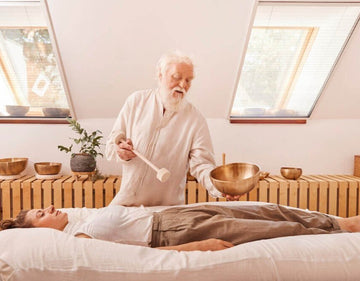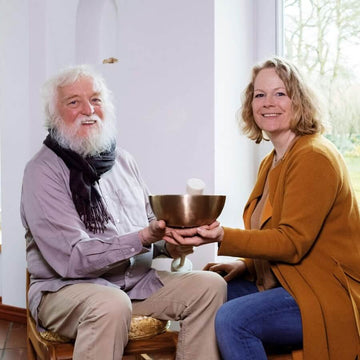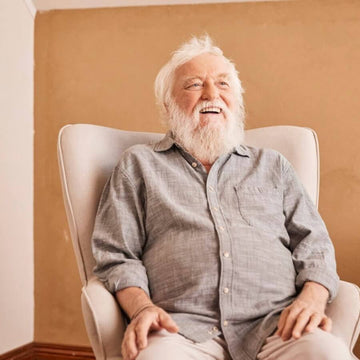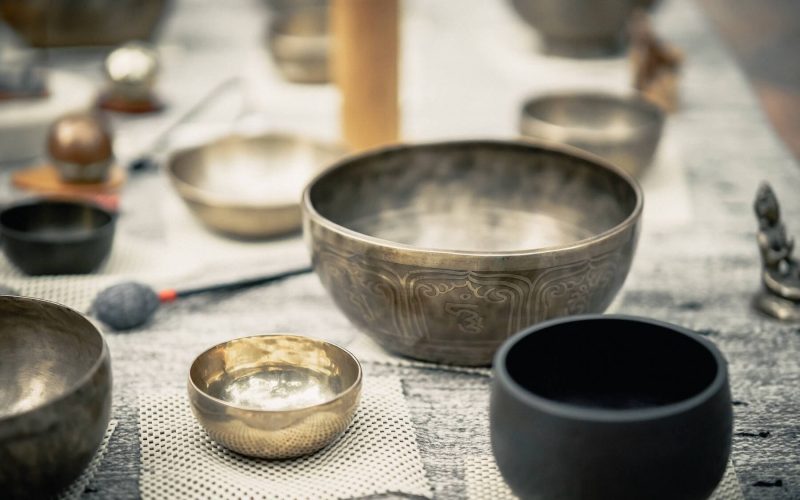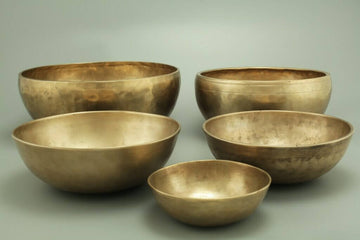
The most important facts in brief
- The music journalist Joachim-Ernst Berendt and the ENT doctor and scientist Alfred Tomatis are regarded as pioneers of sound work.
- In monasteries, metal bowls were used as sacrificial vessels or by mendicant monks.
- To date, there is no evidence of the earlier use of Singing Bowls in rituals or healing ceremonies.
The initial spread of Singing Bowls in Western culture
The spread of Singing Bowls in Western culture goes hand in hand with the hippie movement at the end of the 1960s. Young people from this movement sought out new experiences in India and Nepal, among other places, and encountered the "singing bowls" on their travels.
They were fascinated by the sounds that led them into trance-like states in which consciousness-expanding experiences were possible. Many brought Singing Bowls home with them and there are numerous recordings from this time - especially from the new age music scene - on which Singing Bowls can be heard alongside other exotic instruments.
Where does Singing Bowls come from?
Singing Bowls originally come from the East Asian region - from China, Japan and Burma. Their predecessors were the so-called standing bells. These were roughly hemispherical bronze vessels that stood on the floor with the opening facing upwards and were struck with a wooden clapper.
The temple bells are a special form of these predecessors and look back on more than 5,000 years of history - they are similar to our church bells. However, at around 1,500 years old, the latter are considerably younger. Depending on the area of distribution, different types of singing bowls as we know them today developed from them. They differ in sound and vibration behavior and quality, sometimes enormously.
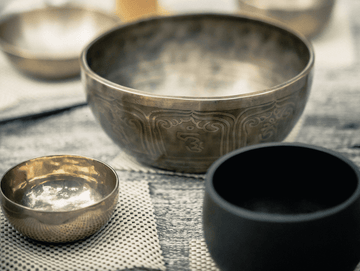
Note
Most of the Singing Bowls that are available in our latitudes today come from India, Nepal, Tibet, Japan or China.
The origins of Peter Hess® Singing Bowls
Peter Hess embarked on a journey of discovery into alternative forms of therapy back in the 1970s. In Nepal, he became acquainted with many different methods. He was particularly impressed by the effect of sounds on the human body and mind and began to investigate this in more detail.
He was so fascinated by working with sound, especially with Singing Bowls, that over the years he developed a completely new concept - sound massage. This method is based on the use of specially developed Singing Bowls, which are played on or next to the body. Together with other companions, he found out over time which sounds were suitable for which parts of the body and which type of Singing Bowl had the best possible effect. This is how Peter Hess began to develop specific Therapy Singing Bowls for bodywork.
Even today, Peter Hess' thirst for knowledge is far from quenched - he works intensively every day on the further development of Peter Hess® Singing Bowls and sound massage. It is important to him to pass on his experience and knowledge. He is convinced that sound massage is an enormously powerful method and is needed today more than ever. In the video you will learn exciting details and insights about working with sound and the development of the Therapy Singing Bowls.
Joachim-Ernst Berendt and Alfred Tomatis as pioneers of sound work
In the 1980s, music journalist Joachim-Ernst Berendt (1922-2000) paved the way for the emerging popularity of sound and listening. With his audio series "Nada Brahma - The World is Sound" and his books, he inspired a large audience. In his works, he accompanies his listeners and readers on a journey through the unexplored regions of the unconscious - an often forgotten world consisting of sound, rhythm and vibration. A must for anyone who wants to understand the universe better.
Another pioneer of sound work was the French ENT doctor and scientist Alfred Tomatis (1920-2001), who dedicated himself to researching the close connection between the voice, brain and ear and published books such as "The Sound of the Universe" and "The Sound World of the Womb".
What was Singing Bowls used for in the past?
Like their origin, the original use of the bronze bowls is also unclear. What is clear is that they were used as signaling devices and everyday objects. For example, food and liquids were stored in the metal bowls - also to enrich them with minerals such as iron or copper. There are parallels here with the nutritional teachings of more than 5,000-year-old Ayurveda or alchemy.
Use of Singing Bowls in trance rituals or healing ceremonies
It is interesting to note that there is no evidence that Singing Bowls was once used for ritual purposes or even in healing. Such stories are usually based on legends, sagas or myths. More recently, they have also often been created by resourceful advertisers in order to arouse customer interest and increase sales figures.
But even if there was a secret use of Singing Bowls in the context of trance rituals or healing ceremonies, this certainly has nothing to do with sound massage or sound therapy as we know it today in the West.
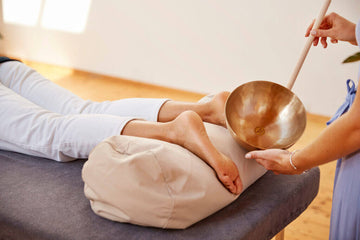
Note
Peter Hess has been developing the sound massage, in which Singing Bowls is positioned and played on and around the clothed body, for people in the West since 1984, based on his experiences in Nepal - it is therefore a Western method.
